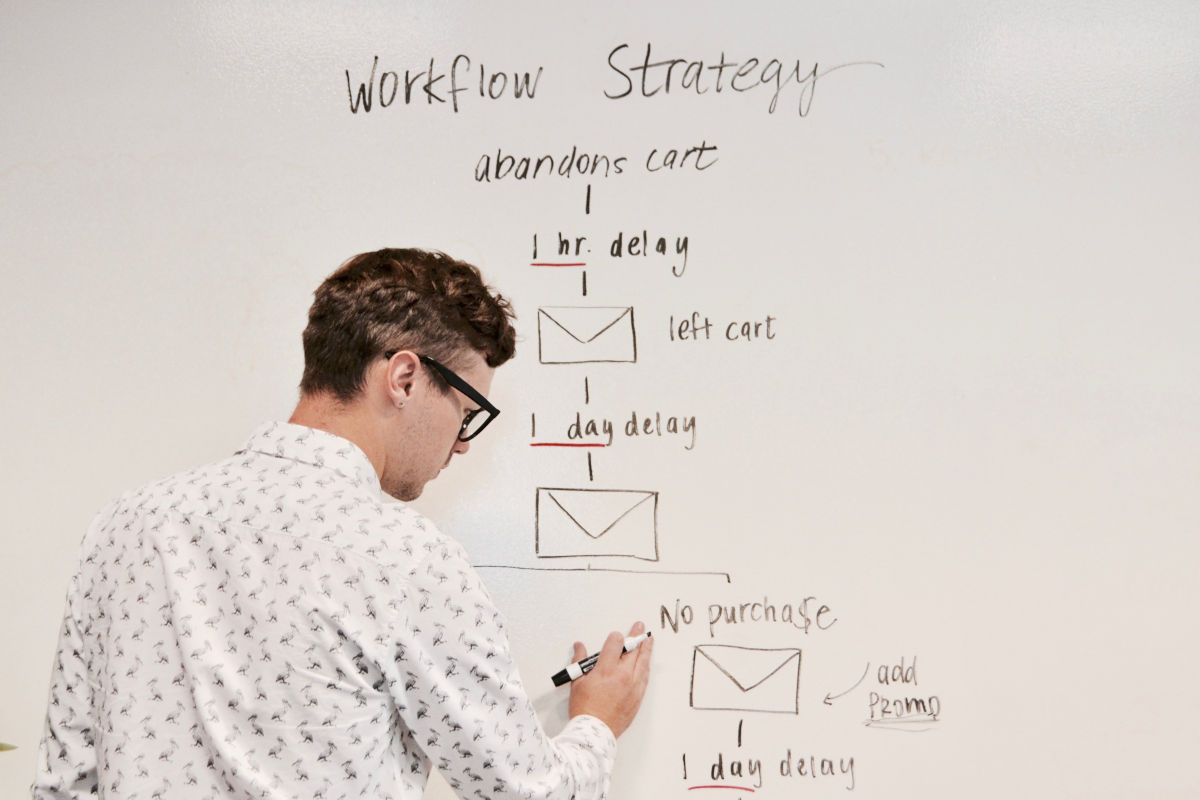Email Marketing Basics: Imagine your inbox as a bustling marketplace, with emails clamoring for your attention. In this digital arena, making your message not only survive but thrive is the name of the game. Welcome to the realm of email marketing, where your words wield unparalleled power. In this article, we’ll demystify email marketing, diving into its fundamentals and the cutting-edge trends that elevate your emails. Buckle up, because we’re about to embark on an email adventure that transforms your inbox into prime real estate.
Table of Content
Benefits of Email Marketing

Email marketing is a powerful tool that businesses can utilize to reach their target audience effectively. With the ability to send personalized and targeted messages directly to an individual’s inbox, email marketing allows organizations to connect with their customers on a more personal level. Through a strategic email marketing campaign, businesses can build and nurture relationships with their customers, keeping them informed about new products, promotions, and industry news.
One of the key benefits of email marketing is the ability to maintain consistent communication with your audience. By collecting email addresses and creating an email list, businesses can easily reach out to their subscribers whenever they have important updates or offers to share. Email campaigns can be designed to cater to specific segments of your audience, ensuring that the messages resonate with the recipients and increase the likelihood of engagement. Additionally, email marketing allows businesses to automate the process of sending messages, saving time and resources. A well-crafted welcome email, for example, can be set up to automatically trigger whenever a new subscriber joins your list, establishing a positive first impression and setting the stage for further engagement.
Understanding the Email Marketing Process
In today’s digital landscape, email marketing has become an indispensable tool for businesses of all sizes. Understanding the email marketing process is crucial for a successful campaign. It starts with selecting a reliable email service provider (ESP) that offers the necessary features and functionalities to effectively manage your marketing email activities. A good ESP will enable you to create and send personalized emails, track and analyze the performance of your campaigns, and ensure the deliverability of your messages.
Crafting an effective email marketing strategy is the next step. Consider your target audience and the goals you want to achieve through your campaigns. Whether you’re a small business looking to increase sales or a larger company aiming to build brand awareness, your email strategy should align with these objectives. It’s important to create compelling and engaging email content that captures your readers’ attention and encourages them to open your emails. Utilize attention-grabbing subject lines and design visually appealing email templates that reflect your brand identity. By leveraging the power of email marketing, businesses can establish strong customer relationships and drive significant conversions.
Building an Email List: Best Practices

Building an email list is vital for effective email marketing. It’s a reliable channel for connecting with your audience and driving conversions. Here’s how:
- Choose the Right Tool: Start with a reliable email marketing tool for efficient list management and content distribution.
- Organic Growth: Use tactics like offering valuable content or incentives (e.g., ebooks, promotions) in exchange for email addresses.
- Optimize Your Website: Make your website user-friendly with clear, engaging opt-in forms to encourage subscriptions.
Remember, providing value to your subscribers is key to attracting engaged and interested individuals to your email list.
Crafting Engaging Email Content
When it comes to crafting engaging email content, it’s important to understand the type of email you are sending and how it fits into your overall marketing efforts. Whether you are sending a promotional email to drive sales, a newsletter to keep your audience informed, or a welcome email to introduce new subscribers to your brand, the content you create should align with your goals and resonate with your audience. By tailoring your message to the purpose of the email, you can create a more personalized and relevant experience for your subscribers.
One key element of crafting engaging email content is the email subject line. A well-crafted subject line can grab attention and entice your subscribers to open the email. It should be concise, clear, and compelling, giving a glimpse of what the email contains and highlighting the value or benefits it offers. Additionally, the design of your email should be visually appealing and reflect your brand identity. A clean and organized layout, high-quality images, and a clear call-to-action can enhance the overall user experience and increase the chances of a successful email engagement.
Subject Lines That Grab Attention
In successful email marketing, the email subject line plays a crucial role in grabbing the attention of the recipients. An effective email subject line not only entices the subscribers to open the email but also sets the tone for the content inside. To craft compelling subject lines, it is essential to understand your audience and segment your email list accordingly. By segmenting your email list based on demographics, preferences, or past interactions, you can create targeted subject lines that resonate with the specific interests and needs of your subscribers. This personalization increases the chances of your emails being opened and read, ultimately leading to higher engagement and conversion rates.
When creating email subject lines, it’s important to strike a balance between being informative and intriguing. A subject line should be concise, concise and provide a glimpse of what the email contains, while also creating curiosity to encourage recipients to click and explore further. Using action-oriented language, and numbers, or asking intriguing questions can pique the interest of your audience. Additionally, incorporating personalization techniques like using the recipient’s name or referencing their previous interactions can make the email subject line feel more tailored and relevant. By investing time and effort in crafting attention-grabbing subject lines, you can significantly improve the overall effectiveness of your email marketing campaigns and drive better results from your email marketing list.
Personalization and Segmentation Techniques
Personalization and segmentation are crucial for successful email marketing. They help you send tailored messages that resonate, boosting engagement. Here’s how to use them effectively:
Personalization:
- Incorporate individualized details like the recipient’s name or past purchases.
- Create familiarity and relevance, increasing email open and action rates.
Segmentation:
- Divide your email list into focused groups based on attributes or behaviors.
- Example: Create segments for cart abandoners to send targeted emails encouraging purchases.
To get started:
- Use a reliable email marketing platform with robust segmentation and personalization features.
- Consider ease of use, scalability, and integration with your marketing tools when choosing a platform.
- Start simple by addressing recipients by name.
- Gradually explore advanced techniques like dynamic content adapting to recipient preferences.
With a well-executed strategy, you can supercharge your email marketing for better results.
Designing Eye-Catching Email Templates
When it comes to designing eye-catching email templates, it is important to consider the compatibility across different email clients and devices. Not all email clients render emails in the same way, and emails may appear differently on desktops, mobile devices, or web-based email services. To ensure that your email templates look professional and consistent across all platforms, using email marketing software that allows for easy customization and testing is crucial.
Before you begin designing your email templates, it is also essential to have a clear email marketing plan in place. Define your goals, target audience, and desired outcomes for each email campaign. This will help you determine the layout, colors, and imagery that will resonate best with your subscribers. Additionally, choose an email marketing service that provides a user-friendly interface and a wide range of customizable templates to help guide your design process. By following a step-by-step guide to email template design and utilizing the features offered by your email marketing software, you can create engaging and visually appealing emails that deliver your message effectively.
Call-to-Action Strategies for Higher Click-through Rates
Call-to-action (CTA) strategies are vital for higher email click-through rates (CTRs). A strong CTA compels action, be it a purchase, webinar sign-up, or ebook download. Here’s how to optimize your CTRs:
- Visual Impact: Make your CTA stand out with contrasting colors, bold fonts, or buttons.
- Clear, Action-Oriented Copy: Use concise, action-oriented language like “Buy Now,” “Sign Up Today,” or “Download Now” to spur immediate action.
- Create Urgency: Add phrases like “Limited Time Offer” or “Only X Spots Left” to instill urgency.
- Test and Optimize: Experiment with different CTAs to find the ones with the highest response rates. Regular testing ensures improved CTRs and maximizes each email’s impact.
By implementing these CTA strategies, you can drive higher click-through rates and make every email you send more impactful. So, don’t hesitate to put these techniques into action and watch your email marketing campaigns thrive.
A/B Testing for Email Campaign Optimization

In today’s competitive digital landscape, having a solid email marketing strategy is crucial for businesses looking to drive engagement and achieve their marketing goals. A/B testing plays a vital role in optimizing email campaigns, ensuring that the right message is reaching the right audience. By comparing different variables, such as email subject lines, personalized email copy, and email templates, businesses can gain valuable insights into what resonates with their subscribers and drives higher levels of email engagement.
One of the key areas to focus on when conducting A/B tests for email campaign optimization is the email copy itself. By experimenting with different language, tone, and messaging, businesses can determine what type of content resonates most with their audience. It is important to create an email marketing template that aligns with the brand image and values while also considering the preferences of the target audience. By consistently testing and refining the email copy, businesses can create an email marketing strategy that effectively captures the attention of subscribers and drives them to take desired actions.
Deliverability: Ensuring Emails Reach the Inbox
In order to have a successful email marketing campaign, it is crucial to ensure that your emails reach the inbox of your target audience. If your emails are consistently ending up in the spam folder, all your efforts in crafting engaging email content and designing eye-catching templates may go to waste. Therefore, improving the deliverability of your emails should be a top priority.
To improve your email deliverability, there are several best practices you can follow. Firstly, make sure to build a targeted email list consisting of individuals who have expressed a genuine interest in receiving your emails. Avoid purchasing email lists, as they often contain outdated or incorrect contact information. Instead, focus on organically growing your list through opt-ins and subscriptions. Additionally, regularly clean and update your email list to remove inactive or bounced email addresses. By sending your emails to a smaller but more engaged audience, you can maximize the chances of your emails reaching the right inbox.
Analyzing Email Metrics for Success Measurement
Email marketing is a powerful tool for reaching your audience and achieving marketing goals. To measure your success:
- Track Key Metrics: Analyze open rates, click-through rates, bounce rates, and conversion rates.
- Use Reliable Platforms: Utilize trustworthy marketing platforms for accurate data.
- Data-Driven Decisions: Understand relevant metrics, optimize campaigns, and engage your audience effectively.
By following these practices and leveraging email metrics, you’ll boost open and click rates, increase revenue, and strengthen customer relationships.
Integrating Email Marketing with Other Channels
Integrating email marketing with other channels is a vital part of a successful marketing strategy. It helps businesses connect with their audience on a more personal level and delivers targeted content, boosting positive responses. Here’s how:
- Unified Customer Experience: Use email marketing platforms that seamlessly integrate with other channels. This creates a unified customer experience, strengthening your brand and enhancing engagement.
- Comprehensive Reach: Whether through social media, SMS, or direct mail, integrating email with other channels expands your reach and impact. You’re not limited to a single email; instead, you harness the power of multi-channel marketing.
- Maximizing Potential: With the number of email users projected to reach 4.48 billion by 2024, leveraging multiple channels is vital. Diversify your approach to tap into your audience’s full potential and achieve better results.
By diversifying their marketing approach and integrating email with other channels, businesses can tap into the full potential of their target audience and drive better results.
Automating Email Campaigns for Efficiency
Automating email campaigns is a crucial aspect of email marketing best practices. By setting up automated workflows, businesses can save time and effort while ensuring consistent communication with their audience. From welcoming new subscribers to delivering personalized product recommendations, automation allows you to streamline your email marketing efforts and focus on other important aspects of your business.
To get started with automating email campaigns, it’s essential to understand the basics of email marketing and the different types of email campaigns that can be automated. Whether it’s a welcome series, abandoned cart reminders, or birthday promotions, automating these repetitive tasks can significantly improve the effectiveness of your email marketing. Additionally, with automation, you can schedule emails to be sent at specific times or trigger them based on customer actions, ensuring timely and targeted communication. Remember, email marketing is a marketing channel that requires careful planning and execution, and automation can enhance its efficiency.
Building Strong Customer Relationships through Email
Building strong customer relationships through email is key to marketing success. Prioritizing relationships can lead to trust, loyalty, and benefits like increased customer retention and a stellar brand reputation. Here’s how to do it effectively:
- Utilize Marketing Tools: To foster strong customer relationships, use various marketing tools. For instance, send welcome emails to introduce your brand and set the stage for engagement.
- Segment Your List: Segment your email list based on customer preferences and behaviors. This allows you to tailor content to their specific needs, making emails more relevant and personalized.
- Effective Email Marketing: Understand your target audience, craft engaging content, and use compelling call-to-action strategies for interaction and high click-through rates.
- Analyze Email Metrics: Study metrics like open rates, click rates, and conversions. They provide valuable insights into your campaign’s success, helping you refine your approach.
By staying proactive and adapting to the evolving landscape, email marketing becomes a powerful tool for building and nurturing long-lasting customer relationships.
Email Marketing Basics Laws and Best Practices
Email marketing is an effective strategy for businesses to connect with their audience, but it is essential to abide by email marketing laws and best practices. These regulations are in place to protect the recipients and ensure that their inbox is not flooded with unwanted messages. Before sending out any email campaigns, it is crucial to send them a test email to check for any formatting issues or errors. This will help to ensure that the email looks professional and functions correctly when it reaches the recipient’s inbox.
To avoid any legal issues and maintain a positive reputation, businesses should create an email marketing plan that aligns with the laws and best practices. This plan should include obtaining explicit consent from subscribers, providing an easy-to-use unsubscribe option, and clearly identifying the sender in the email. In addition, it is essential to only send emails to recipients who have given their consent and to respect their preferences regarding the frequency and type of content they receive. By adhering to these email marketing laws and best practices, businesses can build trust with their audience and achieve better results with their campaigns.
Staying Ahead of Email Marketing Trends
As the digital marketing landscape continues to evolve, it is crucial for businesses to stay ahead of email marketing trends. By keeping a pulse on industry shifts and consumer preferences, companies can ensure that their email campaigns remain effective in capturing and retaining the attention of their target audience.
One key trend in email marketing is the increasing importance of personalization and segmentation. Gone are the days of mass email blasts that are irrelevant to recipients. Today, customers expect emails that are tailored to their specific interests and preferences. By leveraging data and analytics, businesses can gather insights about their customers and segment their email lists accordingly. This allows for more targeted and personalized content that resonates with recipients, driving higher engagement and conversion rates. Additionally, automation tools can be used to send triggered emails based on customer behavior or preferences, further enhancing the personalization aspect.
Conclusion
Email marketing is not just about sending messages; it’s about building and nurturing relationships with your audience. By delivering relevant, personalized content, and adhering to best practices, you can achieve higher open and click-through rates, increased revenue, and, most importantly, stronger customer relationships. In the email marketing journey, remember to adapt, innovate, and always strive for excellence in your efforts. The inbox is your canvas—paint your success story with strategic, thoughtful, and engaging email campaigns.


![Read more about the article How To Make A WordPress Blog: A Step-by-Step Guide [2023]](https://rightroutemedia.com/wp-content/uploads/2023/07/make-wordpress-blog-300x209.jpg)

